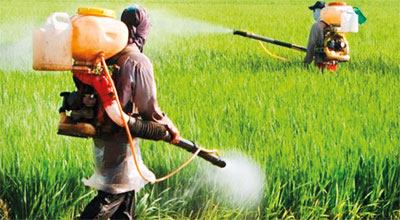Sunday Times 2
Weeding without glyphosate as a precautionary principle
View(s):By Prof. Athula Perera
Human life is full of risks – from the time we wake up in the morning until we go to sleep again we confront a myriad of risks. Even while sleeping we may face the risk of seeing a nightmare but we still go to sleep every night. Marriage is a risk but who doesn’t want to take that risk? Every human action confronts some sort of risk and in almost all cases we take precautions to minimise the risk or if the risk is highly damaging, we avoid that action and move forward.
With the rapid development of technology emerge highly unpredictable, uncertain and unquantifiable risks to the environment as well as to human health. We need to acquire these technologies for the benefit of the people and therefore need to approach this based on the Precautionary Principle (PP) which has been adopted globally when facing risks to the environment and human health.
The Precautionary Principle (or precautionary approach) states that if an action has a possible risk of causing harm to the public, or to the environment, in the absence of scientific consensus (that the action is not harmful), the burden of proof that it is not harmful falls on those taking an action that may or may not be a risk i.e. when an activity poses a risk to human health or the environment, the country has a right to take precautionary measures even if some cause and effect relationships are not fully established scientifically. The PP is about considering the best possible science in order to take the best possible decisions that prevent harm to human health or the environment, when extensive scientific knowledge on the matter is lacking.

Glyphosate used in weedicide
Precaution means taking action to protect the environment and human health against possible danger of low/moderate/severe damage due to an identified hazard. We are now faced with this situation in the case of glyphosate used as a weedicide. The public is well aware of this situation as much has been spoken and written about it and hence needs no elaboration here. A total ban is in place, while there is a request to import some quantities. In view of this uncertain (as far as the public is concerned) situation it is best to approach and make decisions based on the Precautionary Principle. How does the PP work? A good example is the Food Act in relation to Genetically Modified Food (GMF).
The Food Act [in relation to Genetically Modified Food (GMF)] is based on the PP, where a GMF cannot be imported to Sri Lanka without obtaining a permit. The method to obtain a permit involves a scientific Risk Assessment and Risk Management (RA and RM) procedure. The proposed Biosafety Act (Ministry of Environment) in relation to Genetically Modified Organisms, Food, Feed and Processed Products (GMO/FFPs) is also based on the PP involving scientific RA and RM procedures. A similar procedure can be enacted in the case of glyphosate as well. It will involve several steps which will be briefly stated.
Let’s start at the beginning. The importer will need to make an application to the focal point (which in this case will be the Ministry of Agriculture, I presume). The application will provide all the necessary information required for a RA and RM procedure. The Focal Point (FP) will scrutinize the application and identify the Protection Goals (either the Environment or Human Health or both). Depending on the Protection Goals, the application will be subject to a RA and RM procedure as appropriate. The RA and RM procedure in relation to human health (i.e. effect of use of glyphosate on human health) will be conducted by the relevant committee of the Ministry of Health. The effect of the use of glyphosate on soil organisms, for example, will be conducted by a separate committee of experts and so on.
The RA and RM activity will be conducted by a committee of experts. Each committee (with relevant expertise) will carry out a risk analysis for each hazard by identifying the hazard (that which causes damage i.e. is it the whole insecticide or an ingredient in it or several ingredients?), the exposure of the hazard (how often is the soil exposed to it? How often do humans, children/adults, come into contact with the hazard? and so on) and the consequences if exposed (toxicity for example), based on good, sound, scientific evidence. It will then make a Risk Assessment for each hazard such as low/medium/severe and provide Risk Management procedures as well. This RA and RM report will then be sent to the FP for final decision-making. The whole procedure should be transparent and details available to the public who can also send in their observations at an appropriate stage of the procedure, based on sound science.
The Government has the social responsibility to protect the public (and the environment) by taking precautionary measures, when scientific investigation has found a possible risk. This protection can be relaxed only if further sound, scientific findings are provided to show that no harm will result. It signifies a change from post-damage control to the level of pre-damage control of the risks – a “better safe than sorry” approach.
It is the best way to move forward rather than going “round and round” wasting precious time debating at workshops and in public news documents.

